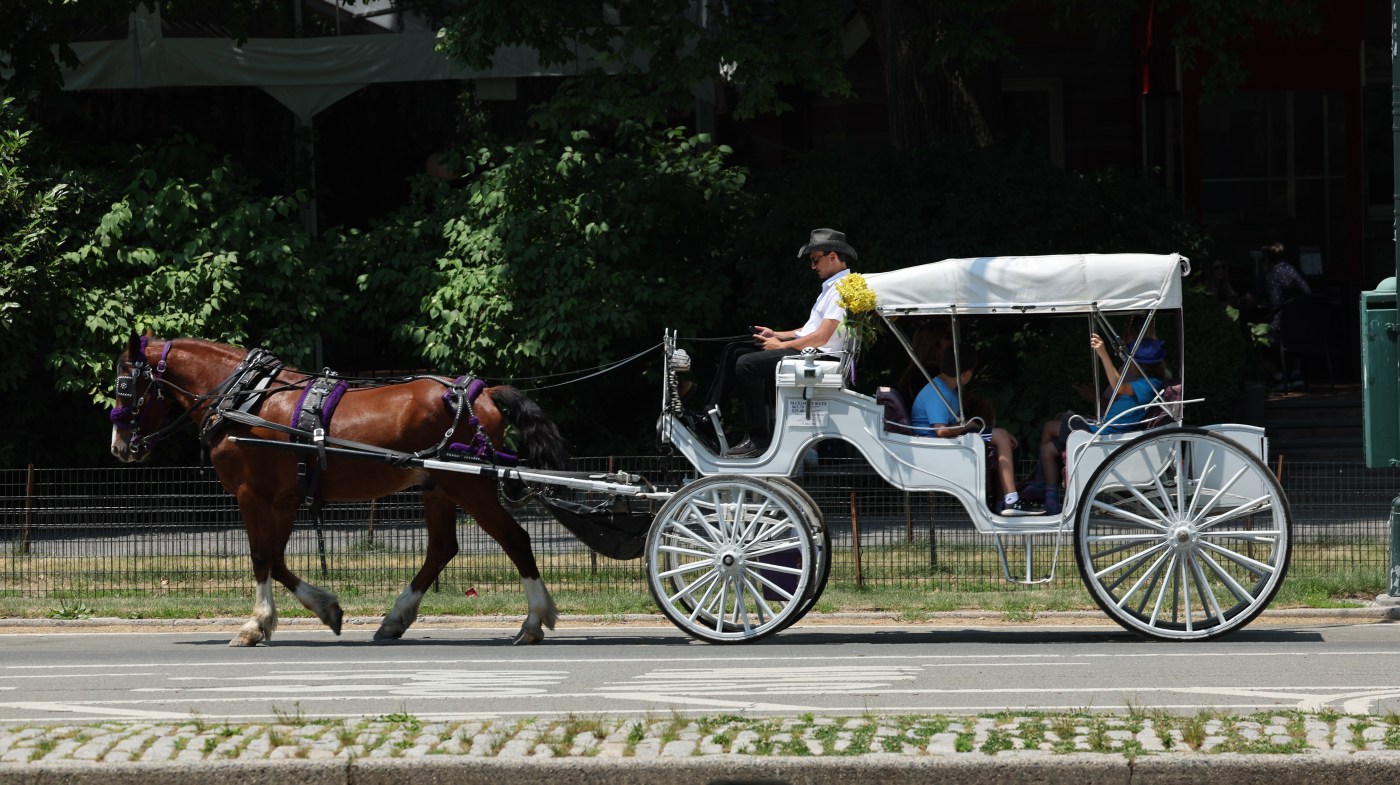Politics
New York City Moves to End Horse-Drawn Carriage Industry

New York City is taking significant steps towards phasing out the horse-drawn carriage industry, a practice that has been part of its history since the early 17th century. Mayor Eric Adams announced an executive order aimed at ending the industry, citing safety concerns for both the horses and the public. The decision follows a series of incidents that raised alarm about the dangers associated with horse-drawn carriages in busy urban spaces like Central Park.
In recent months, there have been multiple accidents involving runaway horses. One notable incident occurred last month when a horse bolted without a driver, leading to passengers jumping from the carriage to avoid injury. Additionally, earlier this year, a pair of horses broke free, injuring a driver and several bystanders. Concerns about animal welfare intensified after the deaths of two horses, Ryder and Lady, who collapsed on city streets.
Calls for Change and Community Support
The administration’s action reflects a growing consensus among New Yorkers. According to recent polling, over 70% of residents support ending the horse carriage industry. The Central Park Conservancy has also advocated for a ban, emphasizing the need for a safer environment in the park. All major mayoral candidates align with this position, underscoring a rare moment of unity among local politicians on this issue.
Mayor Adams articulated the need for change, stating, “The safety of New Yorkers cannot be compromised.” He emphasized that the administration is committed to taking meaningful action to address public safety and animal welfare. The proposed legislation, known as Ryder’s Law, seeks to formalize the end of horse-drawn carriages in the city.
While the move is seen as a step towards modernizing the city’s transportation options, it also aims to support those currently employed in the industry. Mayor Adams reassured carriage drivers that his administration would identify new employment opportunities and explore alternatives, such as electric carriages, for those affected by the transition.
Addressing Concerns and Future Steps
Despite the overwhelming support for the ban, there has been pushback from the Transport Workers Union Local 100. Union leadership has claimed that the executive order betrays hardworking New Yorkers, suggesting it is influenced by affluent stakeholders. Mayor Adams responded firmly to these allegations, asserting that the decision is rooted in public safety and the welfare of the horses, not influenced by external pressures.
“The dangers of the carriages have been documented, and New Yorkers agree that these carriages are dangerous,” he stated. He stressed that the administration is not abandoning tradition but is instead aligning practices with contemporary values.
As the City Council prepares to consider Ryder’s Law, the administration is working to ensure that the transition is smooth for all involved. The mayor’s office is actively engaging with stakeholders, including animal welfare advocates and carriage drivers, to develop comprehensive reforms that will benefit both public safety and the welfare of the horses.
The history of horse-drawn carriages in New York City spans nearly 400 years. As the city moves forward, the hope is to preserve the spirit of its traditions in a manner that is safer and more aligned with the values of modern New Yorkers.
-

 Lifestyle1 week ago
Lifestyle1 week agoSend Holiday Parcels for £1.99 with New Comparison Service
-

 Science2 months ago
Science2 months agoUniversity of Hawaiʻi Leads $25M AI Project to Monitor Natural Disasters
-

 Science2 months ago
Science2 months agoInterstellar Object 3I/ATLAS Emits Unique Metal Alloy, Says Scientist
-

 Science2 months ago
Science2 months agoResearchers Achieve Fastest Genome Sequencing in Under Four Hours
-

 Business2 months ago
Business2 months agoIconic Sand Dollar Social Club Listed for $3 Million in Folly Beach
-

 Politics2 months ago
Politics2 months agoAfghan Refugee Detained by ICE After Asylum Hearing in New York
-

 Business2 months ago
Business2 months agoMcEwen Inc. Secures Tartan Lake Gold Mine Through Acquisition
-

 Health2 months ago
Health2 months agoPeptilogics Secures $78 Million to Combat Prosthetic Joint Infections
-

 Lifestyle2 months ago
Lifestyle2 months agoJump for Good: San Clemente Pier Fundraiser Allows Legal Leaps
-

 Science2 months ago
Science2 months agoMars Observed: Detailed Imaging Reveals Dust Avalanche Dynamics
-

 Health2 months ago
Health2 months agoResearcher Uncovers Zika Virus Pathway to Placenta Using Nanotubes
-

 Entertainment2 months ago
Entertainment2 months agoJennifer Lopez Addresses A-Rod Split in Candid Interview









